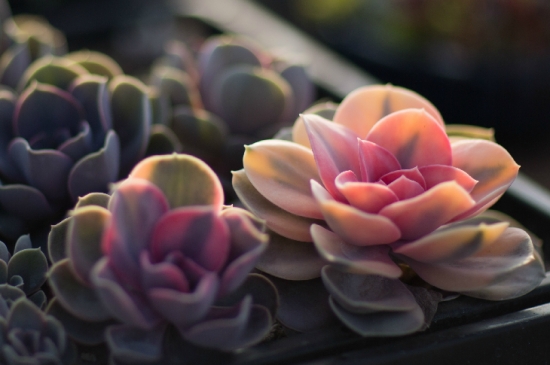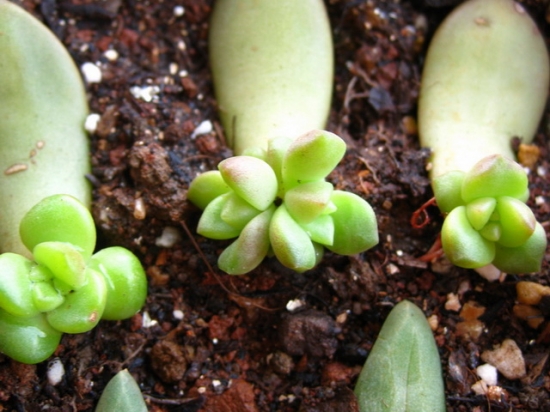How do succulent plants grow? Take a look at six growing techniques for succulent plants
1. Cultivated soil
The soil is required to be loose and permeable, with good drainage, but with a certain water retention capacity, neutral or slightly acidic. Highland globules (Yuehua jade, amber jade) and peony can add a little more rice chaff ash and small-grained weathered rocks. Tall columnar species can be mixed with large grains of quartz sand to fix the plant.
II. Transplanting and planting
Generally speaking, it should be carried out in the recovery period just after the plant dormancy. Root should be trimmed before planting. After root trimming, you should hang it for a few days and then plant it with wet soil. After planting, do not rush to water the sun and do not apply fertilizer within a month.
Adjustment of temperature and light
Cacti and succulent plants usually prefer warmth and large diurnal temperature differences. Except for epiphytic cactus and 12-volume species, the light should be adequate, but soft. For this reason, except for a few flat stem nodes, tall columnar species and some tequila plants, they should be cultivated in the greenhouse all the year round.
Epiphytic types should be shaded except in winter, combined with cooling in summer, and the degree of shading should be between 50% and 70%. Most terrestrial cacti grow most vigorously under the conditions of 28 ℃ to 35 ℃ in the daytime and 10 ℃ to 15 ℃ at night. The succulent plants growing in summer can basically adjust the temperature with reference to terrestrial cacti. Their requirements for light are relatively low, and some species with expanded stem bases are not cold-resistant and should maintain a higher temperature in winter. Succulent plants growing in winter should be ventilated and cooled to keep cool during the summer dormancy period. Sufficient sunshine is required in winter, and the lowest temperature should be maintained above 7 ℃.
Fourth, watering
Watering should be carried out according to its growth state. No matter the type of dormancy in winter or summer, stop watering the basin during the dormancy period. But the types of summer dormancy must be dried in aisles and other places to maintain a certain degree of air humidity. On the other hand, the plants in the vigorous growth period should fully meet their water demand. The seedlings should be watered more, but the big balls should be less (refers to the times); the terrestrial type should be watered less, and the epiphytic type should be watered more; the buds and blossoms should be watered more, the flowers and fruits laggard and less; the leaves with more and thinner leaves should be watered more, and the leaves with thicker but less leaves should be watered less.
5. Fertilization
Fertilization should be carried out in the vigorous growth period and budding stage. Organic manure must be fully mature. When applying chemical fertilizer, the ratio of nitrogen, phosphorus and potassium is 5 ∶ 15 ∶ 10 or 5 ∶ 10 ∶ 10, and a small amount of trace elements should be mixed. The application of fertilizer is light but not thick, and can be applied several times when needed. Fertilization is prohibited for those with root injury, poor growth, stem and leaf injury and so on.
VI. Prevention and control of diseases and insect pests
- Prev

Ventilation is the most important in several culture skills of succulent plants.
Every summer comes, succulent plants begin to plunder, and after a summer, succulent plants that survive are simply lucky representatives. If you want to raise a lot of succulent plants, ventilation is the most critical factor, because it involves the life and death of succulent plants.
- Next

What is the suitable sowing temperature for succulent plants?
There are always some succulent plants who want to sow some succulent plants after they have been raised for a while, so do you know the most suitable temperature for succulent plants to sow?
Related
- Wuhan Hospital Iron Tree Blooming Result Was Instantly Frightened by the Gardener Master
- Which variety of camellia is the most fragrant and best? Which one do you like best?
- What is the small blue coat, the breeding methods and matters needing attention of the succulent plant
- Dormancy time and maintenance management of succulent plants during dormancy
- Minas succulent how to raise, Minas succulent plant pictures
- What are the varieties of winter succulent plants
- How to raise succulent plants in twelve rolls? let's take a look at some experience of breeding twelve rolls.
- Attention should be paid to water control for succulent plants during dormant period (winter and summer)
- Watering experience of twelve rolls of succulent plants
- Techniques for fertilizing succulent plants. An article will let you know how to fertilize succulent plants.

